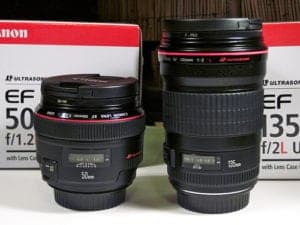PHOTOGRAPHY EQUIPMENT: PORTRAIT LENSES FOR CANON
August 16, 2013
 If you are the owner of a DSLR camera and love taking portrait photos of your kids, then odds are that you’re in the market for a lens to enhance your portrait photography. Unfortunately, there are about a zillion types of lenses out there, making it difficult to decide which one to choose without a bit of help. This post is directed towards Canon DSLR camera owners, although if you are a Nikon shooter you’ll likely find the same lenses exist for your camera.
If you are the owner of a DSLR camera and love taking portrait photos of your kids, then odds are that you’re in the market for a lens to enhance your portrait photography. Unfortunately, there are about a zillion types of lenses out there, making it difficult to decide which one to choose without a bit of help. This post is directed towards Canon DSLR camera owners, although if you are a Nikon shooter you’ll likely find the same lenses exist for your camera.
Full Frame Vs Crop Sensor
First, you need to decide on the right focal length for your portrait lens. If you have a full-frame sensor the appropriate focal length would be 85mm or more. In a crop sensor you have the crop factor of 1.6x for a canon, so a 50mm lens would would suffice, since it translates to 80mm.
The Budget Conscious
For crop sensor cameras, such as the Canon T3i, the Canon “nifty-fifty” is a great start. This lightweight 50mm f/1.8 has a wide aperture for shallow depth of field (to give the blurred background associated with portrait images) and runs about $100.
The Quality Conscious
It may cost a bit more, but higher-quality lenses will last longer and give you sharper images of your kids. The Canon 50mm f/1.4 gives you even more “bokeh” (shallow depth of field) and is of better quality for around $400.
For full-frame sensors, the Canon 85mm f/1.8 runs about the same price as the lens above. It can also be used on a crop sensor camera in case you are thinking of upgrading to full-frame later, just keep in mind that you’ll need a bit more room for your shots in the meantime.
More Options
For more flexibility with your lens (or if you prefer zoom lenses instead of prime ones), consider any of the 70-200m lenses. The extra “zoom” will let you capture more candid images of your kids, or get more head/shoulder shots without having to get in too close. They come in f/4 or f/2.8 as well as stabilized options and range from $600-$2500.
If you still prefer prime lenses there’s also the 100mm f/2 ($529) or the 135mm f/2 ($1255). Both are wonderfully sharp lenses with great quality builds. The great thing about these three lenses is that they can also double for action and sports photography and for the wider-aperture models (f/2-2.8) will also perform well in low light situations.
Keep in Mind
A new portrait lens won’t automatically make you an amazing photographer; you need to take the time to learn your equipment. However, in those clutch situations a portrait lens can take a good photo and make it fantastic. Still in doubt? Borrow or rent a lens and see how you like it before buying.
Photo courtesy of DavidD